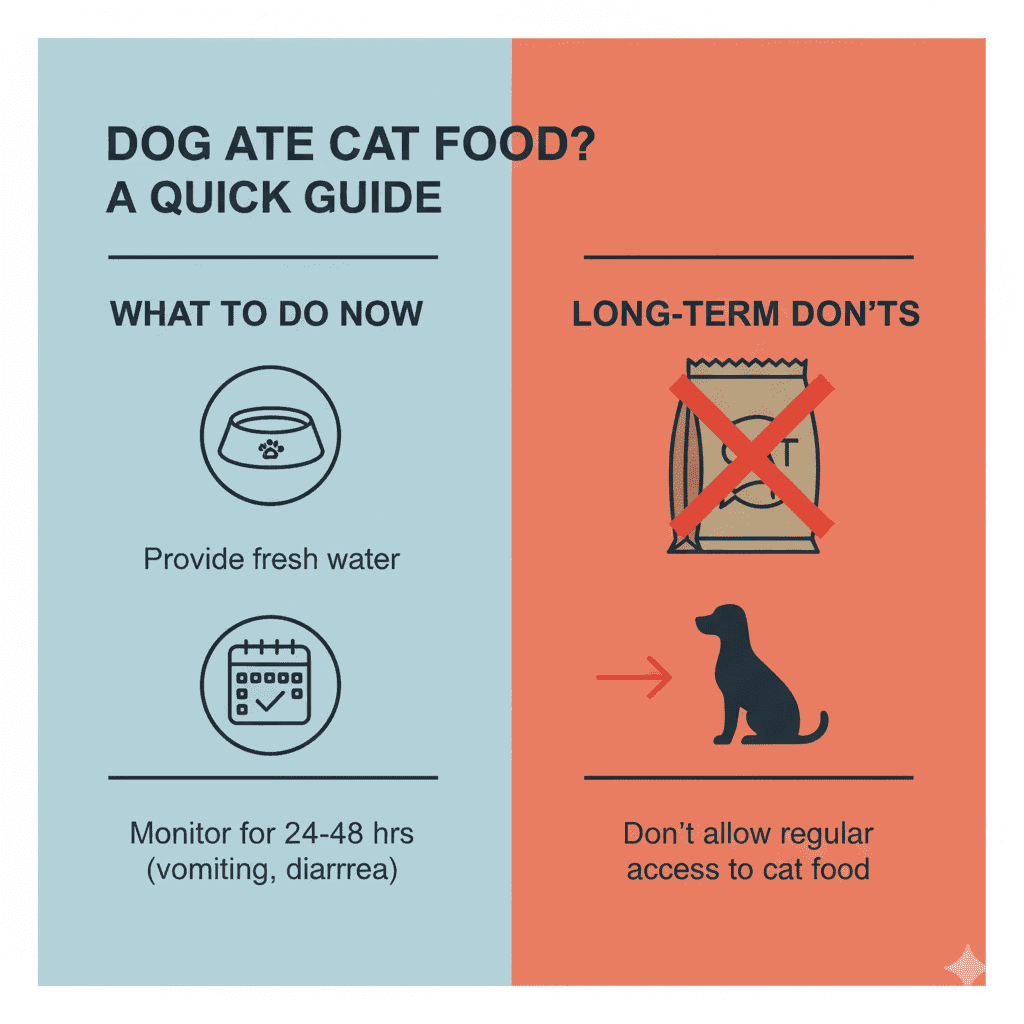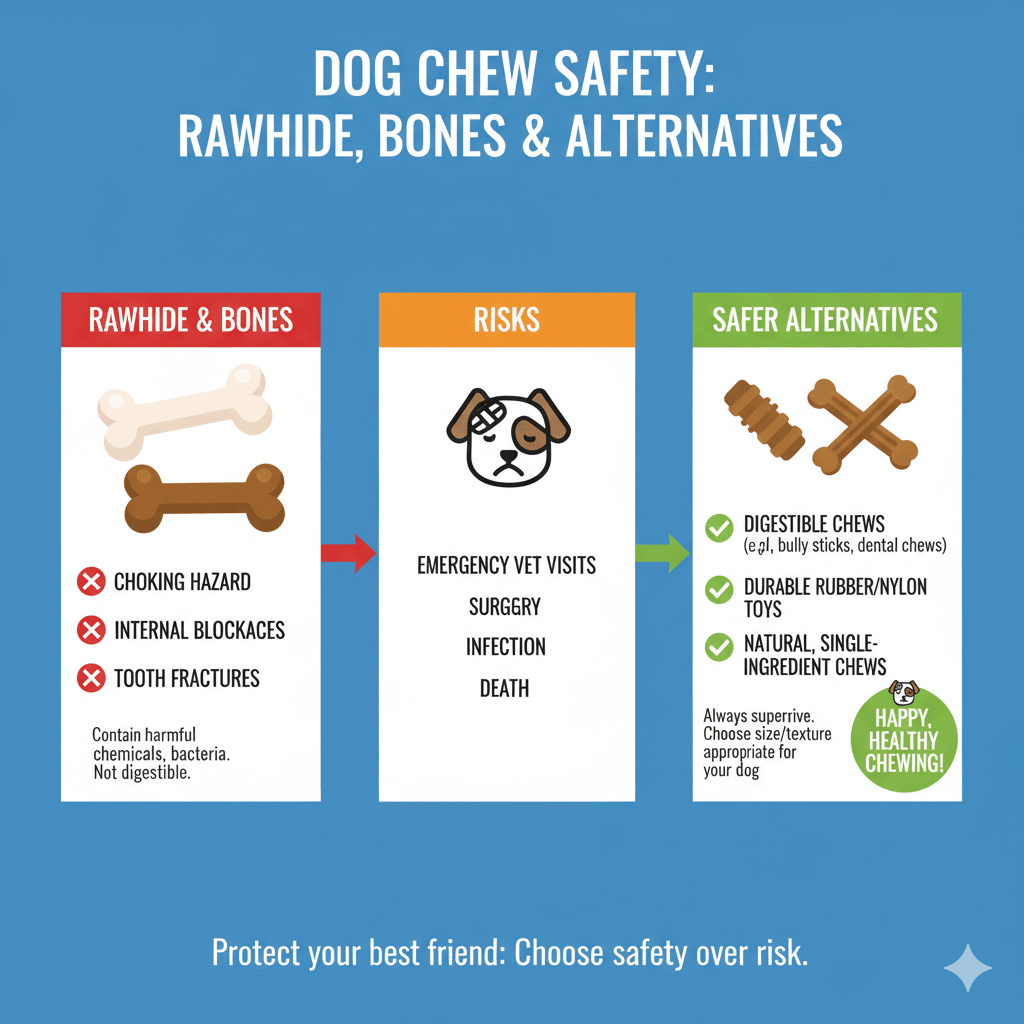Introduction
The image of a dog joyfully gnawing on a bone is timeless. Proponents of raw feeding diets often champion raw bones for dogs as the most natural way to clean teeth, provide enrichment, and deliver essential minerals. It feels primal, correct, and deeply satisfying to watch.
However, this practice is at the center of a fierce debate within the veterinary community. While there are potential benefits, there are also significant, well-documented risks that every owner must understand before making a decision. This article will provide a balanced, veterinary-informed look at both sides of the debate over raw bones.
The Potential Benefits: Why People Feed Raw Bones
Those who advocate for feeding raw bones to dogs typically cite three main advantages, which are rooted in a dog's natural, ancestral behaviors.
- Dental Health: This is the most popular argument. The mechanical action of scraping, chewing, and gnawing on a raw bone can be very effective at removing plaque and tartar buildup from a dog's teeth. This can lead to cleaner teeth, healthier gums, and better breath.
- Mental Stimulation and Enrichment: Chewing is a powerful instinct for dogs. It's a natural stress-reliever and a fantastic way to alleviate boredom. A raw bone can keep a dog happily occupied for an extended period, providing crucial mental exercise.
- Nutritional Value: Raw bones are a source of calcium and phosphorus, which are essential minerals for skeletal health. The marrow and cartilage also contain other valuable nutrients.
For many owners, these benefits of raw bones for dogs seem to offer a perfect, all-in-one solution for dental care, nutrition, and entertainment.
The Serious Risks: A Veterinarian's Perspective
While the benefits are appealing, the veterinary community, including the American Veterinary Medical Association (AVMA), generally advises against feeding raw bones due to significant safety concerns for both pets and humans.
The risks of raw bones are serious and can lead to emergency situations:
- Dental Fractures: This is arguably the most common and painful consequence. Even raw bones, especially dense, weight-bearing leg bones from cattle, can be harder than a dog's teeth. Aggressive chewers are at high risk of fracturing their teeth, particularly the large carnassial premolars, which often requires expensive dental surgery to repair or extract.
- Bacterial Contamination: Raw bones are uncooked animal products and can be contaminated with harmful bacteria like Salmonella, E. coli, and Listeria. These pathogens can sicken your dog and can also be spread throughout your home, posing a health risk to human family members—especially children, seniors, and anyone who is immunocompromised.
- Choking and Obstructions: A dog can easily break off a piece of bone that is just the right size to become lodged in their throat, esophagus, stomach, or intestines. These obstructions are life-threatening emergencies that require immediate medical intervention.
- Digestive Upset: The rich, high-fat marrow in some bones can be too much for a dog's system, potentially triggering a painful bout of pancreatitis or causing severe vomiting and diarrhea.
A Guide to Harm Reduction (If You Choose to Feed Raw Bones)
If, after weighing the pros and cons, you still decide to offer raw bones, it is critical to follow strict safety protocols to minimize the risks. This is a harm-reduction strategy, not a full endorsement.
- NEVER, EVER Feed Cooked Bones. This is the number one rule. Cooked bones are brittle and splinter easily, making them an extreme hazard.
- Choose the Right Bone. Select a bone that is appropriately sized for your dog (too large to be swallowed whole) and avoid hard, weight-bearing leg bones. Softer, more pliable options like raw chicken wings, necks, or turkey necks may be safer for some dogs.
- Always Supervise. Never leave your dog unattended with a bone. If they break off a piece or start chewing too aggressively, you need to be there to intervene.
- Practice Strict Sanitation. Treat raw bones like any other raw meat. Prepare them on a separate surface, wash your hands thoroughly after handling, and disinfect any surfaces the bone touches. Discard the bone after 15-20 minutes to prevent bacteria from multiplying.
Managing your dog's diet is about balancing nutrition, enrichment, and safety. While our app focuses on complete and balanced meals, the PetMealPlanner app can also help you track your dog's calorie intake from chews and treats to prevent weight gain. (For a broader look at chew options beyond bones, read our comprehensive guide: [Long-Lasting Chews: Are Rawhides and Bones Safe?])
The debate over raw bones involves weighing potential dental benefits against serious risks like fractured teeth and bacterial contamination.
Conclusion: A Decision to Make with Your Vet
The debate over raw bones for dogs exists because both the benefits and the risks are very real. While they can offer excellent enrichment and dental cleaning, the potential for painful dental fractures, life-threatening obstructions, and bacterial contamination leads many veterinary professionals to conclude that the risks outweigh the rewards.
Safer alternatives for dental health (like VOHC-accepted dental chews) and enrichment (like durable puzzle toys) exist. Before you introduce raw bones into your dog's routine, it is essential to have an open conversation with your veterinarian. They can help you assess your individual dog's health, chewing style, and the potential risks to your household, guiding you toward the safest possible choice.


